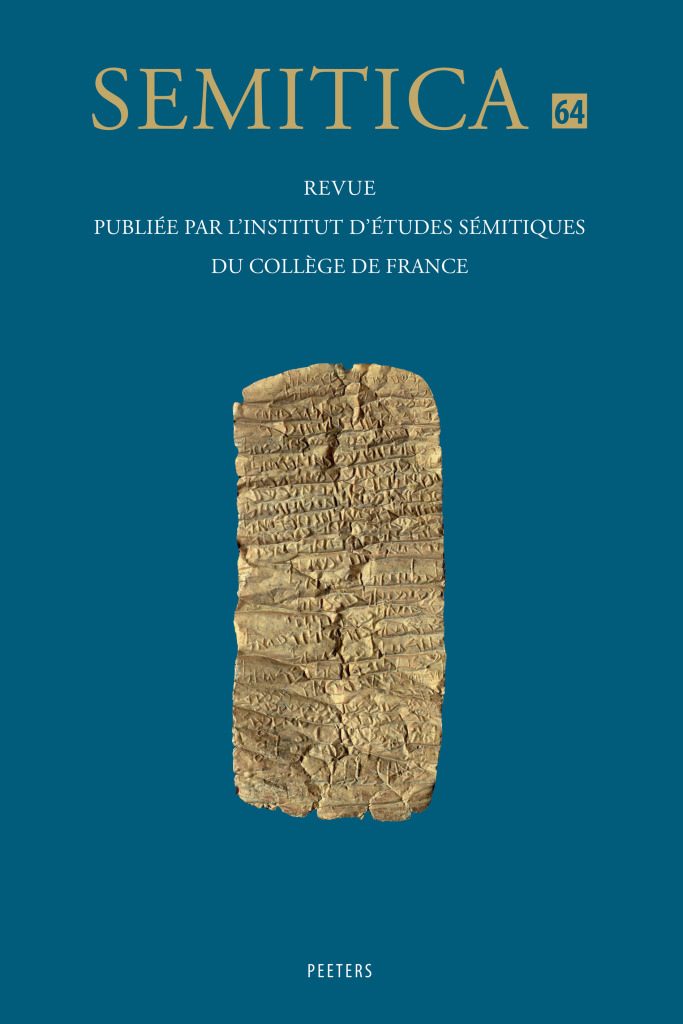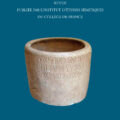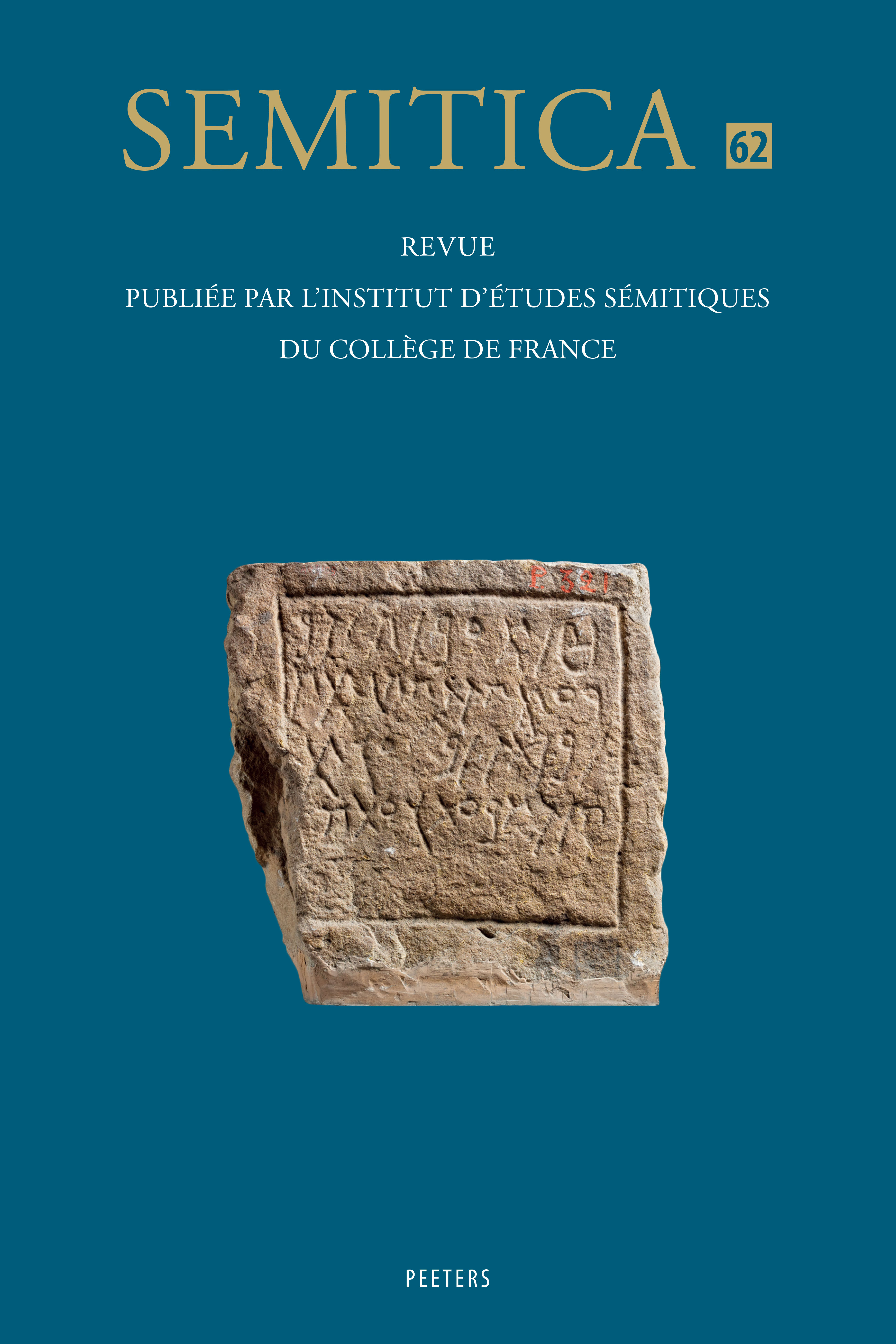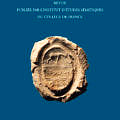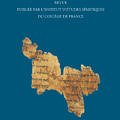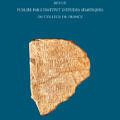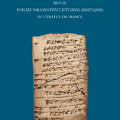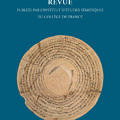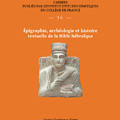Semitica 64 is out!
Semitica 64, édité par Michael Langlois sous la direction de Thomas Römer. Leuven, Peeters, 2022. 388 p.
- Ki-Eun Jang. The “Energic” -𝑛𝑛 of the Non-Prefix Conjugation in Ugaritic: A New Proposal. p. 5
- Jan Dušek. Locating the findspot of the stela from Ördekburnu. p. 21
- Madadh Richey. The Khirbet al-Mudayna ath-Thamad Moabite Altar Inscription: A Desirable Object. p. 35
- Stefan Jakob Wimmer. ‘Not One Iota will pass…’ On a Variant Shape of the Letter Yod and What Can and Cannot be Deduced from it. p. 47
- James D. Moore. New Phoenician and Aramaic Labels and Ostraca from Excavations at Syene and Elephantine between 2010–2015. p. 71
- Ohad Abudraham. On Silver and Gold: Two Jewish Lamellae from Late Antiquity. p. 131
- Nadav Naʾaman. Vows to the ‘God who is in Dan’ and the ‘God of Bethel’. p. 159
- Innocent Himbaza. Josué 12,9-24 a-t-il été inspiré par les inscriptions perses achéménides ? p. 171
- Vladimir Olivero. The Relevance of Linguistic Diachrony in the Literary Critical Assessment of MT 1 Kings 12:30-33 // 13:33-34. p. 193
- Innocent Himbaza. La ponctuation samaritaine et le Pentateuque samaritain de Fribourg. p. 209
- Hervé Gonzalez, Ido Koch and Thomas Römer. Editorial Introduction. p. 231
- Diederik J. H. Halbertsma. Does practice make a place ‘perfect’? Approaching ‘utopia’ in the Archaeology of Iron Age Southern Levantine Religion. p. 237
- Axel Bühler. Les dimensions des sanctuaires dans le Proche-Orient ancien et la Bible hébraïque. p. 255
- Shua Kisilevitz – Oded Lipschits. Tel Motza : un centre économique et cultuel de l’âge du Fer II (période du Premier Temple). p. 297
- Lionel Marti. The Origins of Utopia? The Description of the Temples in the Royal Assyrian Inscriptions. p. 323
- Peter Dubovský. When a Building Becomes a Holy Place: Mesopotamian and Biblical Dedication Ceremonies. p. 343
- Patrick M. Michel. Sacred Spaces in Emar (Syria): The Case of the ‘Door of the Sikkānu’. p. 371
Sacred Spaces in the Ancient Near East: Between Reality and Utopia
 En
En Fr
Fr